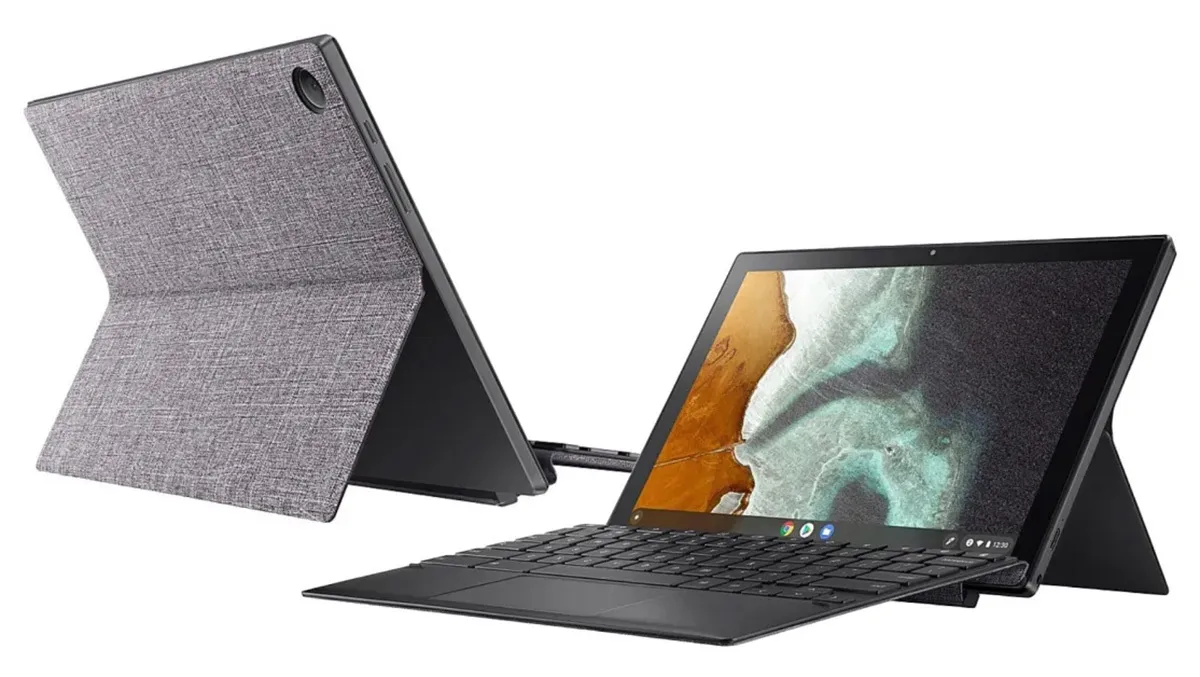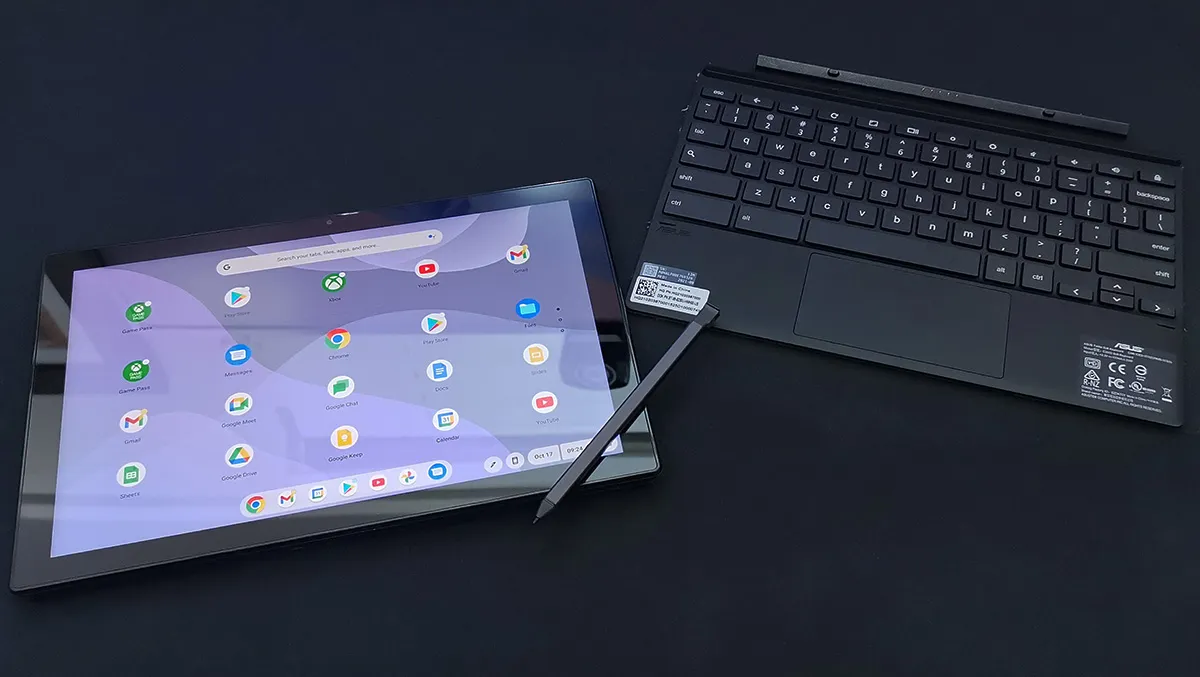
Hands-on review: Asus CM3 Chromebook
Does the Asus 10.5-inch CM3 Chromebook offer a viable alternative to a Windows notebook? TechDay's Darren Price finds out.
For reasons unknown, whilst I've reviewed more than my fair share of laptops and notebooks, I've never used a Chromebook. So, when Asus asked me to take a look at their CM3000DV Chromebook, I jumped at the chance.
Just before Android smartphones took off in a big way, I had a 10-inch Samsung Android tablet. I could write emails with a half-decent keyboard, watch movies on a decent screen and even sketch stuff using the stylus. It was great. But as phones became more versatile, luging a tablet around became a bit of a pain. Still, I missed the large screen and being able to type properly instead of with my thumbs on a tiny phone keyboard.
The Asus CM3 Chromebook bought back all sorts of happy memories.
The Asus CM3 Chromebook is powered by a MediaTek Kompanio 500(MT8183) CPU. This octa-core CPU combines four Arm Cortex-A73 cores with four Arm Cortex-A53 cores, all running up to 2.0 GHz. Graphics are provided by an Arm Mali-G72 MP3 GPU, integrated into the MediaTek CPU, powering the 10.5-inch 1920 x 1200 touchscreen. The review sample had 4GB of LPDDR4X memory and 64GB of eMMC SSD storage.
The device has a cloth front and back that looks like it's already in a protective case. The cloth cover is actually the back of the detachable keyboard on one side, and the magnetic landscape/portrait stand that encases the tablet/screen part of the device, on the other.

Opening the Chromebook alerted me to the keyboard being held in place with magnets the same as the back cover/stand. I easily pulled the keyboard away from the screen, almost dropping the device on the floor. Whilst it looks tough, if dropped I can see the keyboard and back cover flying off leaving the actual LCD tablet panel exposed to damage.
At about 26cm x 17cm and 8mm thick the Chromebook is quite petite. It only weighs 0.5kg as well, making it very portable.
The device's biggest plus is also its biggest negative. The Chrome OS is a Linux-based operating system that can also run Android apps from the Google Play Store. You may already have a load of apps and games ready to run on your new Chromebook. But this also means that you are not going to get quite the same amount of harmony as you would with a Windows laptop if you are otherwise entrenched with Microsoft.
The device does fully integrate into the Google ecosystem, allowing you free access to the Google office suite and your Google Drive. Additional free apps like the wonderful Chrome Canvas sketch app (making use of the device's cleverly hidden stylus) make things even better.

With the help of the stand integrated into the cover, the device is great for enjoying your favourite streaming shows. The screen is vivid and the audio is more than capable.
The Chromebook can also play the odd game natively from the Google Play Store. But, with a Microsoft Gamepass Ultimate subscription and an Xbox Game controller, you can also stream quite a few games, via the Xbox app. After signing onto the Xbox app and plugging in a game controller via USB I was back, soaring amongst the clouds in Microsoft Flight Simulator.
The Asus CM3000DV Chromebook is a no-nonsense device that is all about getting you working without the hassles associated with Windows laptops. What it lacks in Windows integration and features it makes up for in simplicity. The device's ChromeOS will be very familiar-looking to Android phone users. As a very portable office machine, it really shines, but it is also versatile enough to provide some entertainment during your downtime as well.


